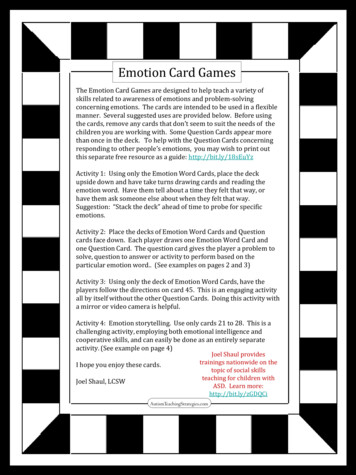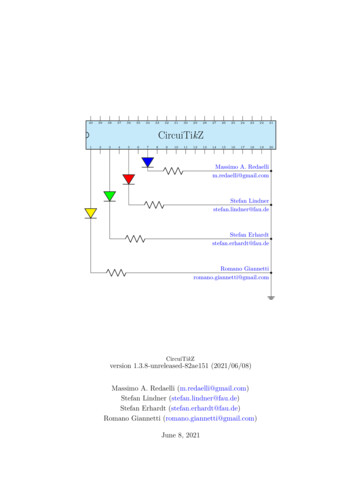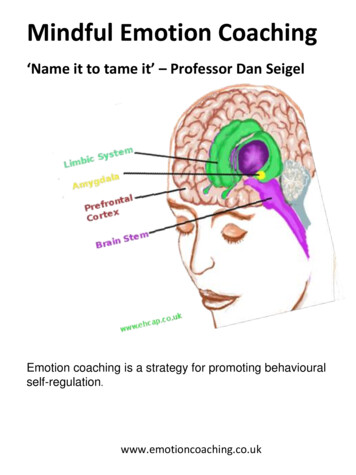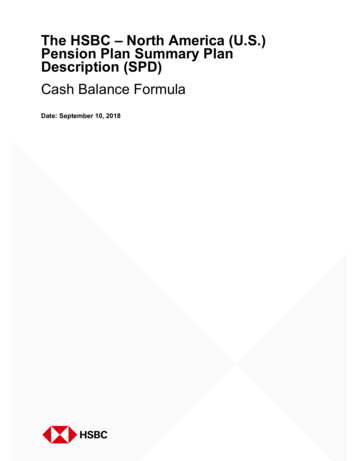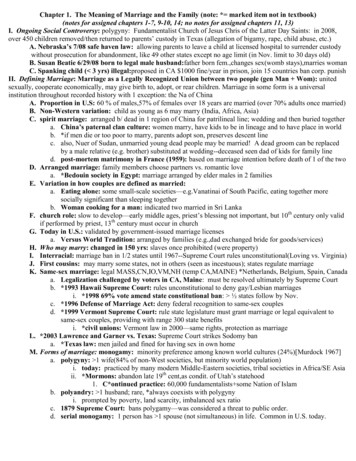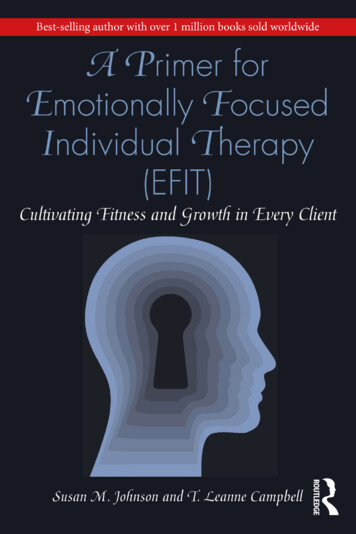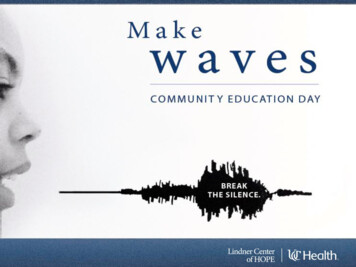
Transcription
Emotion Focused Household CultureMichael K. O’Hearn. MSW, LISW-SLindner Center of HOPECommunity Education Series
Emotion-Focused Household CultureLearning Objectives1.Define Key Concepts: Culture, Family, Norms2.Illustrate how key concepts influence social organization3.Define Emotion-Focused family interactions, and their influence onHH organization.4.Illustrate how Emotion-Focused Household Culture promotes trust andcooperation.
Key Terms:Culture, Family, NormsSource: Robertson, I. (1981). Sociology, Second Edition. NY: WorthCulture“All the shared products of human society, comprising its total way of life.” Material Products – houses, utilities, infrastructure, cities, etc., Nonmaterial Products – religions, languages, customs, norms, taboo, & varioustrends
CULTURE (Con’t)Source: Robertson, I. (1981). Sociology, Second Edition, NY: WorthSocial Interactions in Everyday Life,and Cultural Conditioning An act is anything you do: sing a song, brush your teeth, stop at a stop sign, acts ofkindness/resistance Social Interaction is the process by which people act toward or respond to other people A symbol is something that can meaningfully represent something else, to the extent thatthere is Symbolic Interaction: how we interpret and derive meaning from our daily interactions, incontext of culturally conditioned categories and definitions; further Cultural categories and definitions, in turn have reciprocal influence w/ symbolicinteractions Swimme & Tucker (2011) attribute symbolic reasoning as a key factor in theunprecedented efficiency of human cultural evolution, and exponential pace of technologydevelopmentSource:Swimme B., & Tucker, M.E. (2011). Journey of the universe. New York: Yale University Press.
Key Term:Family Define “Family” Family Interactions are symbolic, “perpetual,” and “inter-generational.” Historically,pillars of stability and cohesion in all levels of society. Unprecedented Challenges: the exponential pace of technology development naturally hasunintended consequences that also develop exponentially Example: Information overload has cultural categories and definitions in flux diminishing cohesion, or “shared meaning” in symbolic interactions Diminished cohesion & shared meaning generates cognitive dissonance in and amongfamilies/communities “Crisis of perception” (Chopra, 1993) has reciprocal influence with cultural norms andprioritiesSources:West, B.J., & Grigolini, P. (2011). Complex webs: Anticipating the improbable. NY: Cambridge University PressChopra, D. (2015). Quantum healing: Exploring the rontiers of mind/body medicine, (Kindle Edition), NY: Bantam.
Key Term:NormSource: Robertson, I. (1981). Sociology, Second Edition, NY: WorthNorms are the unspoken rules that condition & often habituate individual andcollective behavior (e.g., stop at a stop sign) Norms promote whole group efficiency, stability, and cohesion at all levels ofsocial hierarchies (e.g., Local, State, National, Global) Essentially, norms are geographically aggregate thoughts that are as powerful andfunctional as we make them; e.g., when introduced to someone new, we say“Hello” & shake hands, v. sing a show tune. What if you did? Harvard Sociologist Harold Garfinkel demonstrated the existence of norms insocial experiments that intentionally violating them; e.g., barter w/ checkoutclerk, face the back when riding an elevator
Household Culture:Family Interactions & Social NormsFamily Norms HH culture has the same “mechanics” as larger cultural processes: interpretationand shared meaning derive from symbolic interactions Symbolic interactions have reciprocal influence with both HH and larger culturalcategories and definitions. Shared meaning on HH culture categories and definitions (sans teenagers!) isoften far more attainable than in larger social systems.What are some of your family’s norms? Fun Communication Conflict Cooperation
Emotion-Focused Couples TherapySusan Johnson
Emotion-Focused Interactions1. Reflect and Distill the current interaction.2. “Affect Assembly” – allow awareness, and deepenexperience of current emotions. Allow time fortransformations, and re-appraisal.3. Turn new experiences into new interaction signalsand behaviors toward others.4. Explore with others how new experiences createnew signals & behaviors.5. Integrate into relationship and household culture,and validate.
Trust & CooperationTRUSTSource: Gottman, J. (2012). The science of trust. New York: W.W. Norton Trust reduces the complexity of all transactions Trust permits action with incomplete information(benefit of the doubt) Trust minimizes transaction costs Trust increases the relationship’s resilience forfitness demands as complexity naturally increasesover time
Trust & CooperationCooperationSource: Gottman, J. (2012). The science of trust. New York: W.W. NortonCooperation get individuals more in their self-interests thanany other style. John Nash won the Nobel Peace Prize in Economics in 1996 “Nash Equilibrium” cooperative framework rooted in GameTheory; The film. “A Beautiful Mind” depicted his life John Gottman integrated Game Theory into his CT model toestablish how cooperation sustains trust; “trust metric”
Thank you!
TRUST. Source: Gottman, J. (2012). The science of trust. New York: W.W. Norton Trust reduces the complexity of all transactions Trust permits action with incomplete information (benefit of the doubt) Trust minimizes transaction costs Trust increases the relationship’s r
